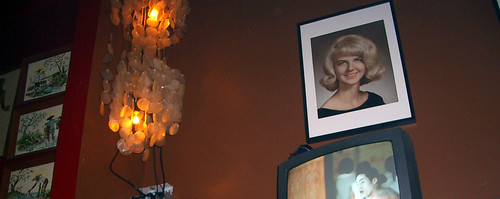For many TV viewers, their dream is for a new 1080p flat screen TV. They'd like nothing better than to buy one, find one, or get one as a gift. It doesn't matter, as long as they get to watch one of these TVs instead of the big clunker they're watching now.
The fact is that TV technology has cone a very long way in the last 10 years, with a huge improvement in flat screen picture quality being the most noticeable benefit. In the early years of flat panel TVs, weather they were LCD or plasma, picture quality was noticeably lacking. Sure, they were thin, you could hang them on your wall, and your neighbors would be jealous, but really, their pictures looked pretty bad.
Times have changed. For all but the most jaded videophiles, almost any new flat panel TV ranks just under a gift from God, especially those of the 1080p variety. Even the bottom feeders look ok, and the best are nothing short of spectacular. What separates the best flat screen TV from the also rans?
As you might have guessed, a great flat screen TV, as in the days of TV gone by, will have a better picture than its lesser endowed brethren. One of the first performance statistics to be thrown around in ads, reviews and by your local TV salesperson is the resolution. All flat panel TV pictures are made up of tiny, colored dots called pixels. The set's resolution is simply the number of pixels it uses to make the picture. Flat panel TVs come in two basic resolutions; 1080p and 720p (which can actually be 768p, depending on the TVs manufacturer). All else being equal, more pixels is better.
Ah, but seldom is all else equal. In fact, many other things besides resolution are important when you start looking at picture quality. Some of the more important things to look at are the set's contrast ratio, black level, gray scale reproduction, color rendition, and lack of video artifacts.
The contrast ratio is simply the difference between the lightest and darkest black and brightest white the TV can produce. There are two basic ways this is measured; using a checkerboard pattern, or full on / full off. A larger number is better, but manufacturers seem to come up with endless ways to fudge this number to benefit their own TVs. Suffice it to say that if you're looking at two different TVs side by side the one with a better contrast ratio will look better.
Black level is a measure of how little light the set lets through when areas of the screen are supposed to be completely dark. In the old days of tube televisions that was no problem. The way that technology worked, if a part of the screen was supposed to be completely dark, the beam inside the TV tube just didn't scan it, so no light was produced.
With flat panel TVs, no area of the screen can be completely turned off, the black level is a measure of how well the TV can contain (LCD) or reduce (plasma) the screens luminance. Lower is better for a better picture. There aren't too many TV manufacturers that publish minimum luminance (that's what tells how little light the TV produces) specifications for their TVs, so you just have to play it by eye.
Gray scale is extremely important. Proper gray scale reproduction is the ability of the TV to reproduce truly neutral shades of gray at all levels of brightness. Many sets tend to trend toward blue, green or red instead of being a truly balanced gray. To make matters worse, they will sometimes favor one shade in the lighter areas of the picture, and another in the lighter areas.
You may think "That's okay, I never watch black and white TV shows anyway." Well, in addition to making sure black and white programming looks correct, all the colors on your TV screen, weather it's LCD or plasma, 1080p or 720p, rely on a properly rendered gray scale to be accurate. That's why good gray scale is one of the most important aspects of an accurate picture.
While only some TVs are really good in this regard as they're delivered, the good news is that many TVs can be calibrated to be very accurate, by a service technician or an ISF certified custom installer with the proper equipment.
Color rendition is exactly what it sounds like. It's a measure of how well the TV renders color. A set with good color rendition will produce rich accurate colors. A TV with poor color rendition will display weak (or in some cases, oversaturated), inaccurate ones. Which would you prefer? As noted above, good gray scale reproduction is one of the foundations of color rendition, but far from the only component. The TV's color decoder, panel construction and quality of it's power supply all come into play when it reproduces color.
One of the first places flat panel TV manufacturers skimp when they're building a TV is the video processing circuitry. There are many reasons for this. The main one is cost. Good video processing circuitry, such as the Silicon Optix HQV solution, are relatively expensive, while there are many other less expensive, albeit not as capable solutions on the market. In a market relentlessly driven to lower retail prices, every dollar counts. TV manufacturers feel they can make a tradeoff in the video processing capabilities of their sets and few consumers will notice.
The upshot for the consumer is that sets with poor video processing will exhibit video artifacts. Some of the more troubling video problems are moiré patterns, mosquito noise and "jaggies".
Moire' patterns are a fluctuating rainbow appearance in alternating black and white areas of the picture, such as referee's shirts. This effect can also be seen in other alternating line patterns, such as moving bleachers in NASCAR events. Thankfully for NASCAR, their seats are seldom empty, as the effect is more pronounced when the seats are empty.
Mosquito noise is seen in the transitions between dark and light areas of the picture and looks like mosquitoes flying around the transitions' edge. Jaggies are seen in moving, diagonal lines. Instead of being smooth, they will be jagged, or stair-stepped in appearance.
Another area to examine before making a 1080p flat screen TV purchase is weather or not the set has the inputs you'll need to connect all your components. For example, you may want to plug in a laptop computer. Some TVs have an HD-15 computer input, as is found on a laptop, while many do not.
Does the set have a sufficient number of HDMI inputs for connecting digital video devices, such as BluRay players, DVRs, online movie terminals, or cable boxes? Which version of HDMI are the inputs? HDMI 1.3 is required to accept the latest high bit rate color formats (of which there is little or no need for yet, but it is coming).
Many flat panel TVs now have network connection, USB ports or card slots to facilitate displaying digital video. Consumers are plugging in thumb drives, USB hard drives, and memory cards to show slideshows of family photos, for example. The proliferation of movie download services and terminals will make Ethernet ports and USB connectivity more important going forward.
One secret of the 1080p flat panel TV world is that there are really only a few companies that actually build the flat panel portion of the TV itself. For example, as of this writing, only 3 companies, Panasonic, LG and Samsung, produce plasma panels. In the LCD arena Sony, LG-Phillips, S-LCD (a Samsung/Sony joint venture), Hitachi Displays (a Panasonic, Hitachi, and Canon joint venture), and Sharp own large flat panel display manufacturing facilities. All the other companies buy their panels from one of these companies.
There is much to think about when evaluating a new 1080p flat screen TV. No matter which set you choose, it will probably be a huge step up from what you were watching before. That doesn't mean that you shouldn't put some thought into making what is, for most people, a major purchase.
A little bit of time spent finding the right flat screen now will ensure years of enjoyment from your new TV. After all, the difference between a good flat screen TV and a great one may only be a few hundred dollars, but the set will be with you for many years to come.
Related : LED television

